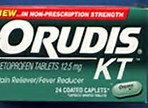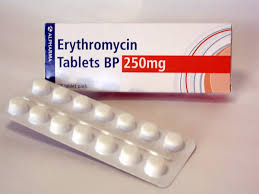Today Sept 5th marks the opening of the IDMC-11 conference. This is the 11th time that the scientific community comes together to discuss the advances in the myotonic dystrophy field. The scientists share information about advances in the all stages of the disease from the molecular basis to drug development. Watch here for updates and summaries from the conference. Today is registration and the keynote address. The conference this year is in San Francisco, CA USA.
Author Archives: super_admin
Ionis Pharmaceuticals Pursuing More Potent Myotonic Dystrophy Drug
Recent information came to light that Ionis is still continuing pursue a drug for myotonic dystrophy. The first trial ended and was not successful. What we learned is that the team was impressed that progress was made. Rather than pursue this initial drug they may be switching to a new more highly improved drug. This makes sense as the cost to pursue a drug is high $$$$ and you want your best candidate forward.
International Scientist meeting of Myotonic Dystrophy Researchers in San Francisco Sept 5-9 2017
The IDMC meeting will be in San Fransisco this year. Make plans to attend the scientific sessions or the meeting of the Myotonic Dystrophy foundation
Please save September 5th – 9th, 2017 for the IDMC-11 conference being held in San Francisco, California. If you are interested in receiving updates about IDMC-11, please sign up online at www.idmc11.org.
Welcome to the IDMC website, home of the International Myotonic Dystrophy Consortium (IDMC, or International Dystrophia Myotonica Consortia). This site is dedicated to the community of scientists, physicians and health care providers who have taken up the fight against Myotonic Dystrophy, a progressive neuromuscular disease that effects people and families around the world.
Phenylbutazone & NSAIDS – Another potential treatment(s) for Myotonic Dystrophy
Another paper has been published and revealed another potential treatment for myotonic dystrophy, Phenylbutazone PBZ.. Interestingly this study was also done in Japan………… now a hotbed of repositioning drugs for treatment of myotonic dystrophy. some info from the study
“Using the drug repositioning strategy, we found that PBZ markedly elevated MBNL1 expression in myogenic cells(Fig. 1 and Supplementary Fig. S1) as well as in skeletal muscles in HSALR mice model (Fig. 2 and Supplementary Fig. S2). PBZ mitigated muscle pathology (Fig. 2d,e) and improved the running wheel activity and grip strength
in HSALR mice (Fig. 2c and Supplementary Fig. S2d).”
This summary above showed that in mice this drug helped mice with myotonic dystrophy run on the wheel better and had better grip strength. More info below
PBZ is an NSAID with anti-inflammatory, antipyretic, and analgesic activities. PBZ was approved in humans for rheumatoid arthritis and gout in 1949. Although incidental adverse effects of fatal liver disease and aplastic anemia markedly lowered the use of PBZ, PBZ is still used as an alternative drug for ankylosing spondylitis32,33.
Interestingly, another NSAID, ketoprofen has been reported to suppress CUG-induced lethality in Drosophila34, and we also found that 50 μ M ketoprofen upregulated the expression of Mbnl1 mRNA 1.2-fold in C2C12 cells, which was lower than the 1.3-fold increase of Mbnl1 mRNA by 50 μ M PBZ (Supplementary Fig. S6). Ketoprofen
and some other NSAIDs may have beneficial effects on a mouse model of DM1, as well as on DM1 patients.
Editors Note: This drug (PBZ) approval was removed for humans in 2003 in the USA and Canada. It is available for use in animals only. The drug Ketoprofen was not studied in depth but is an approved NSAZID drug in the USA. We have choosen the image of Ketoprofen as this is an approved drug in the USA.
Full study is Here.. Phenylbutazone Treatment DM1 mice
Erythromycin Use in Myotonic Dystrophy Patients – Reduces diarrhea and more
In 2002 a study in Sweden was conducted to see if a drug, Erythromycin would help improve the stomach emptying rate in patients with Myotonic Dystrophy. This study looked at 10 patients… here are a few key details:
“Gastrointestinal symptoms are
common among affected individuals and they may be of
considerable clinical relevance, e.g. abdominal pain, diarrhoea,
or anal incontinence. In a recent study we have found
that one-quarter of the patients considered their gastrointestinal
symptoms to be the most troublesome consequence
of the disease [3].”
The study showed that the drug erythromycin did not improve stomach emptying time but did help the majority of patients with diarrhea. In general the patients thought this drug improved their condition.
“Nevertheless, in general the patients
considered the treatment effective. This could be explained
by possible effects of the drugs on parts of the gastrointestinal
tract other than the stomach [15,16] due to the widespread
involvement of the gastrointestinal tract in MD
[9,17]. This assumption gains support in our study from the
fact that six out of 10 patients experienced reduced
symptoms of diarrhoea.”




